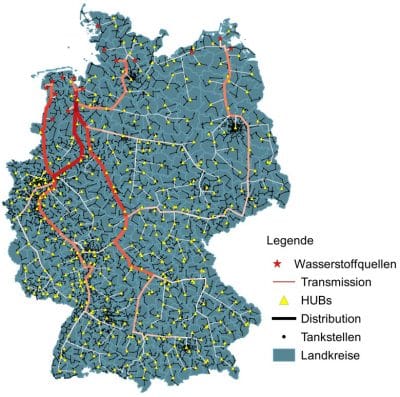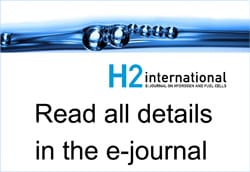The German government has set clear targets for emissions reduction, starting at minus 40 percent by 2020, 55 percent by 2030, 70 percent by 2040, and 80 to 95 percent by 2050 compared to 1990 levels. One option to meet these targets is to increase renewable use to at least 80 percent of total market size (local electricity production and imports minus exports) by 2050. Intermittent renewable sources such as PV, onshore and offshore wind power will be crucial to meet demand due to their huge potential and will dominate any future electricity market. But they also generate considerable amounts of excess energy. Sector integration can help utilize this surplus, for example, in transportation. A recent study has explored potential scenarios for meeting the government’s 2050 targets through sector integration.
The approach used in this study differs from other works in its application of new models to offer highly granular scenarios that meet relevant requirements. The complex and highly dynamical systems were divided into mathematically highly accurate submodels that show in-depth physical and technical data in very small intervals. Then, generalized models with reduced granularity were used to evaluate draft designs and scenarios. Both methods were employed to develop and verify one possible renewable supply future that links the power and transportation sector through a suitable gas infrastructure and offers both technical and economic opportunities for substantial GHG emissions reduction in Germany.
What is known in Germany as “residual load” is electricity demand minus feed-in from intermittent sources such as certain renewables. A positive residual load means that load-following power plants (e.g., gas or coal plants) need to cover the remaining demand. A negative residual load, however, makes it possible to store energy in hydrogen through the power-to-gas pathway.
…
Enough energy available
For example, the study analyzed residual loads in 11,268 municipalities and extrapolated their demand by the hour up to 2050. The study also showed Germany’s maximum voltage grid of 220 kV or 380 kV at different stages of expansion to illustrate that negative residual loads are highly prevalent in northern Germany (see fig. 1: blue-colored areas), whereas positive ones can be found particularly in cities or highly industrialized areas (in red, e.g., in North Rhine-Westphalia).
If the use of renewables were expanded based on the numbers in table 1, but the current power grid kept in place, excess energy from residual loads would add up to 293 terawatt-hours. Using this energy in electrolysis would yield around 6.2 million tons of hydrogen.
It should be noted that even if the grid were set up perfectly – meaning Germany were placed on a copper plate – and the existing pumped storage plants included, the surplus would still add up to 191 terawatt-hours. This would leave enough energy to produce around 4 million tons of hydrogen.
…
Network financially possible
In addition to the analyses on market introduction, potential shareholders or stakeholders were identified and evaluated for their role in supporting the creation of a hydrogen infrastructure. Financial assistance could come from sources such as the German government, insurance companies, public or retirement funds. The evaluation also proved that there was no shortage of money to finance the infrastructure; rather, capital would have to be raised through economically sustainable business models. For example, the money available to …
The above-mentioned research findings are currently being utilized and debated by members of the virtual Power to Gas and Heat institute, the IEA’s Task 38 on Power-to-Hydrogen and Hydrogen-to-X, the H2 System expert group of North Rhine-Westphalia’s Fuel Cell and Hydrogen Network and the Energy System 2050 initiative of the Helmholtz Association.
In the future, the existing system design and the models developed in this study need to be advanced and adapted for integration into other energy pathways with an eye on GHG emissions reductions in Germany and a European or global approach factoring in regional differences in market situations. Currently, eight people are each working on their own dissertation to explicate the issues.
The author of this article received the DWV Innovation Award in summer 2016 for his dissertation and would like to express his deepest gratitude to Professor Detlef Stolten, director of the Institute of Electrochemical Process Engineering at the Jülich Research Center, and his team for the excellent support during his time as a PhD student.
Author: Dr. Martin Robinius




























Before we go on the wrong track (again) we should first analyze the energy infrastructure it self and find out, where the losses in fact are created.
Once knowing this, it is fairly easy, to change this to a much better status.
See here the unbelievably big losses inside the German energy infrastructure:
http://www.hydrogenambassadors.com/background/energylosses-d2015.php
On my website, you can also find the 2011 data, for comparison…
Für meine anderssprachigen Leser:
http://www.hydrogenambassadors.com/background/energieverluste-d2015.php
Auf meiner Website findet Ihr auch die Daten für 2011, zum allfälligen Vergleich…